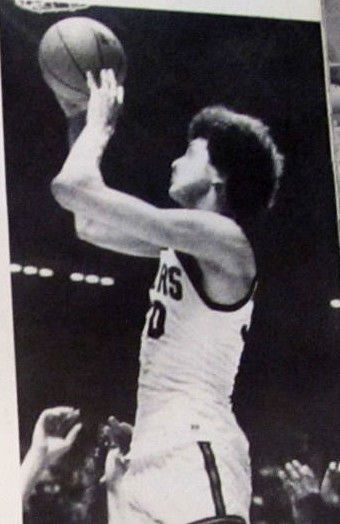Sam Bowie: Victim of Circumstance
- Sea Lion Press
- May 9, 2019
- 4 min read
By Colin Salt

Success or failure? Circumstance and point of view can define either - in one timeline, a sportsman or woman can be deemed a "failure"; in another, a definite "success" - without their own performance changing. Sam Bowie is a perfect example.
In the 1984 NBA draft, the Houston Rockets selected Hakeem Olajuwon with the top pick. Olajuwon would go on to win two championships with them and be considered one of the best “big men” of all time, alongside such legends as Shaquille O’Neal and David Robinson. With the second pick, fellow big Sam Bowie was chosen by the Portland Trail Blazers. With the third, the Chicago Bulls selected someone you might have heard of named Michael Jordan.
Bowie’s career was plagued by injuries, and he’s gone down in history as one of the ultimate examples of a “draft bust”. Looking at the actual evidence, this is in many ways unfair, and shows how circumstance can change the perception of someone. Yes, in comparison to Olajuwon, much less Jordan, he was much less talented. But Sam Bowie would be thought of much more differently if he hadn’t been sandwiched between them.
First, there were legitimate reasons for choosing him. The previous year, the Trail Blazers had selected shooting guard Clyde Drexler, a Hall of Famer in his own right. There was thus far less of a pressing need for a fellow shooting guard like Jordan. Something similar happened with one of the 21st Century’s most infamous NBA draft busts, when the Detroit Pistons selected Darko Milicic over Carmelo Anthony. Milicic’s fan-bestowed nickname was “The Human Victory Cigar”, a reference to the Pistons mostly playing him in the closing minutes of overwhelming wins so that their main players could rest. Yet at the time, the Pistons already had a solid starter at Anthony’s position in the form of Tayshaun Prince. While the Balkan Bust was embarrassing for Detroit and may have cost them a dynasty, it wasn’t too great a loss-they won a title in 2004 and came within one game of winning another the next year.

Second, injuries aside, Bowie was not an absolute flop. That his career lasted for eleven seasons speaks for itself-no utter bust would have lasted even close to that long. And so do his stats. Compared to Olajuwon, much less Jordan, they look bad. But compare him to more obscure bigs like P. J. Brown (around the same), Chris Dudley (better), Benoit Benjamin (slightly worse), or even the Bulls’ own Bill Cartwright (only somewhat worse), and that’s another story.
Third, the 1984 draft as a whole had an abundance of talent, including five all-stars and/or Hall of Famers in the first ten picks alone, as well as one Hall of Famer (John Stockton) slightly lower. Put Bowie in a slightly lower pick, or have him be in a more barren draft, and remove the “they had the potential to draft a hyperstar instead of him” factor, and you have a decent-when-healthy player that would likely fade into obscurity, unless he had the fortune to end up on a championship team. Historically, Bowie didn’t, although it’s important to note that all three teams he played for made the playoffs while he was there (which is to his credit, as it means he and his stats weren’t dragged down by playing for a basket case like the short-lived Vancouver Grizzlies).
So what does this have to do with alternate history? I’d argue the experience of Sam Bowie can teach a few things.
The first is to consider the context of the time before truly judging with the benefit of complete hindsight. I consider “if they’d done the Course of Action A their competitor ultimately did instead of the Course of Action B they took, they’d have benefited as much” to be highly flawed and over simplistic, but it’s important to see why Course of Action B was taken, because with limited information and a different context, it frequently looks much better. The Blazers already had a future Hall of Famer in Jordan’s position, for starters.
The second is to see what the best comparison to the subject/divergence really is and adjust the frame of reference accordingly. In this case, it means comparing Bowie to middle-of-the-road big men who frequently played for middling teams, not superstars like Olajuwon, Stockton, Bowie teammate Drexler, or fellow 1984 draftee Charles Barkley.
The third is to move past initial perceptions. I don’t want to lionize Bowie too much. Even when put against other big men who were unlucky and suffered from ultimately career-ending injuries, he wasn’t the best among them (Ralph Sampson and Brad Daugherty would fit that category more). But the popular perception of Sam Bowie is that of an absolute, utter catastrophe of a player, a tragedy for being ahead of one of the top five of all time. That is inaccurate, and he deserves much better.
It's all down to your frame of reference and context. Perception is so often driven by sheer accident, and exactly the same performance can be a success or failure.




Comments